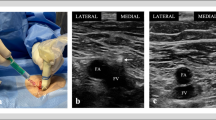Abstract
Atrial Fibrillation management is still a matter for debate. Past research has largely been based on the outpatient setting in which patients are followed during ambulatory visits. Very little data exist on the optimal management of AF in the Emergency Department (ED). This study investigated which factors drive different AF treatments in the ED, describing their use in different hospitals. Finally, the efficacy of different strategies in terms of cardioversion in the ED was analyzed. Charts of patients treated for atrial fibrillation (AF) were collected in 6 EDs in a large metropolitan area over a 24-consecutive month period and were reviewed and analysed. Demographics, comorbidities, treatment strategy and ED outcome were collected. Inclusion criteria were symptom onset <3 weeks and stable hemodynamic conditions at presentation. A propensity score was used to adjust for baseline clinical characteristics and to compare the efficacy of different treatments. 3,085 patients were included in the analysis. Variables associated with a rhythm control strategy were onset of symptoms <48 h, age, dyspnea, palpitations, renal failure and the presence of a mechanical valve. Different EDs applied different strategies in terms of drugs used and the electrocardioversion rate, showing heterogeneity in AF management. Adjusting for the propensity score, electrocardioversion and antidysrhythmic drugs of class Ic were more effective than a wait-and-watch strategy in the ED. Despite international guidelines being respected, AF management is heterogeneous in different ED settings. A rhythm control strategy with electrocardioversion and Class Ic drugs is more effective than a wait-and watch approach during the ED visit. Further research, toward an evidence-based approach to the emergent management of AF in the ED, is still needed.




Similar content being viewed by others
References
Ryder KM, Benjamin EJ (1999) Epidemiology and significance of atrial fibrillation. Am J Cardiol 84:131–138
Alden J, McDonald AJ, Pelletier AJ, Ellinor PT et al (2008) Increasing US emergency department visit rates and subsequent hospital admissions for atrial fibrillation from 1993 to 2004. Ann Em Med 51:58–65
Wol PA, Abbott RD, Kannel WB (1991) Atrial fibrillation as an independent risk factor for stroke: the Framingham Study. Stroke 22:983–988
Kannel WB, Abbott RD, Savage DD, McNamara PM (1982) Epidemiologic features of chronic atrial fibrillation: the Framingham study. N Engl J Med 306:1018–1022
De Vos C, Pisters R, Nieuwlaat R, Prins MH, Tieleman RG, Coelen RS, Van den Heijkant AC, Allessie MA, Crijns H (2010) Progression from paroxysmal to permanent atrial fibrillation. J Am Coll Cardiol 725–731
Betts T, Mitchell A (2009) Is rate more important than rhythm in treating atrial fibrillation? YES/NO. BMJ 339:664–665
The Atrial Fibrillation Follow-up Investigation of Rhythm Management (AFFIRM) Investigators (2002) A comparison of rate control and rhythm control in patients with atrial fibrillation. New Engl J Med 347:1825–33
Fuster V, Ryden LE, Cannom DS et al (2006) ACC/AHA/ESC 2006 guidelines for the management of patients with atrial fibrillation—executive summary: a report of the American College of Cardiology/American Heart Association Task Force on Practice Guidelines and the European Society of Cardiology Committee for Practice Guidelines (Writing Committee to Revise the 2001 Guidelines for the Management of Patients With Atrial Fibrillation). J Am CollCardiol 48:854–906
Borgundvaag B, Ovens H (2004) Cardioversion of uncomplicated paroxysmal atrialfibrillation: a survey of practice by Canadian emergency physicians. CJEM 6(3):155–160
Ross MA, Davis B, Dresselhouse A (2004) The role of an emergency department observation unit in a clinical pathway for atrial fibrillation. CritPathwCardiol 3(1):8–12
Decker WW, Smars PA, Vaidyanathan L, Goyal DG, Boie ET, Stead LG, Packer DL, Meloy TD, Boggust AJ, Haro LH, Laudon DA, Lobl JK, Sadosty AT, Schears RM, Schiebel NE, Hodge DO, Shen WK (2008) A prospective, randomized arial of an emergency department observation unit for acute onset atrial fibrillation. Ann Emerg Med 52(4):322–328
Cleophas TJ, Zwinderman AH (2007) Clinical trials: how to assess confounding and whyso. Curr Clin Pharmacol 2(2):129–133
Arbogast PG, Ray WA (2009) Use of disease risk scores in pharmacoepidemiologic studies. Stat Methods Med Res 18(1):67–80
Austin PC (2008) A critical appraisal of propensity-score matching in the medicalliterature between 1996 and 2003. Stat Med 27(12):2037–2049
Xavier Scheuermeyer F, Grafstein E, Stenstrom R, Innes G, Poureslami I, Sighary M (2010) Thirty-day outcomes of emergency department patients undergoing electrical cardioversion for a trial fibrillation or flutter. Acad Emerg Med 17(4):408–415
Dankner R, Shahar A, Novikov I, Agmon U, Ziv A, Hod H (2009) Treatment of stableatrial fibrillation in the emergency department: a population-based comparison of electrical direct-current versus pharmacological cardioversion or conservative management. Cardiology 112(4):270–278
Roden DM (2000) Electrophysiology: antiarrhytmic drugs: from mechanisms to clinical practice. Heart 84:339–346
Acknowledgments
full list of participating authors: Enrico Ferri M.D., Antonello Rosa M.D., Letizia Di Francesco M.D., Paola Della Guardia M.D., Federica Paglia M.D., Benedetta De Bernardis M.D., Salvatore Vitali M.D., Emiliano Salvatori M.D., Maria Cristina Greci M.D.,Davide Marsiliani M.D., Annarita Carroccia M.D., Emanuele Gilardi M.D., Sara Calcinaro M.S., Sabina Guarino, MD, Valentina Verga, MD, Evelina Forte M.D., Roberta Tamburi, M.D., Francesca Docimo, M.S., Daniela Brunelli M.S., Iza De Deus Brito Monteiro M.S. and Paolo Iacomini M.S.
Conflict of interest
On behalf of the Global REaserch on Acute conditions Team (GREAT) Network. Authors have no conflict of interests.
Author information
Authors and Affiliations
Corresponding author
Rights and permissions
About this article
Cite this article
Buccelletti, F., Somma, S.D., Galante, A. et al. Disparities in management of new-onset atrial fibrillation in the emergency department despite adherence to the current guidelines: data from a large metropolitan area. Intern Emerg Med 6, 149–156 (2011). https://doi.org/10.1007/s11739-011-0537-3
Received:
Accepted:
Published:
Issue Date:
DOI: https://doi.org/10.1007/s11739-011-0537-3




